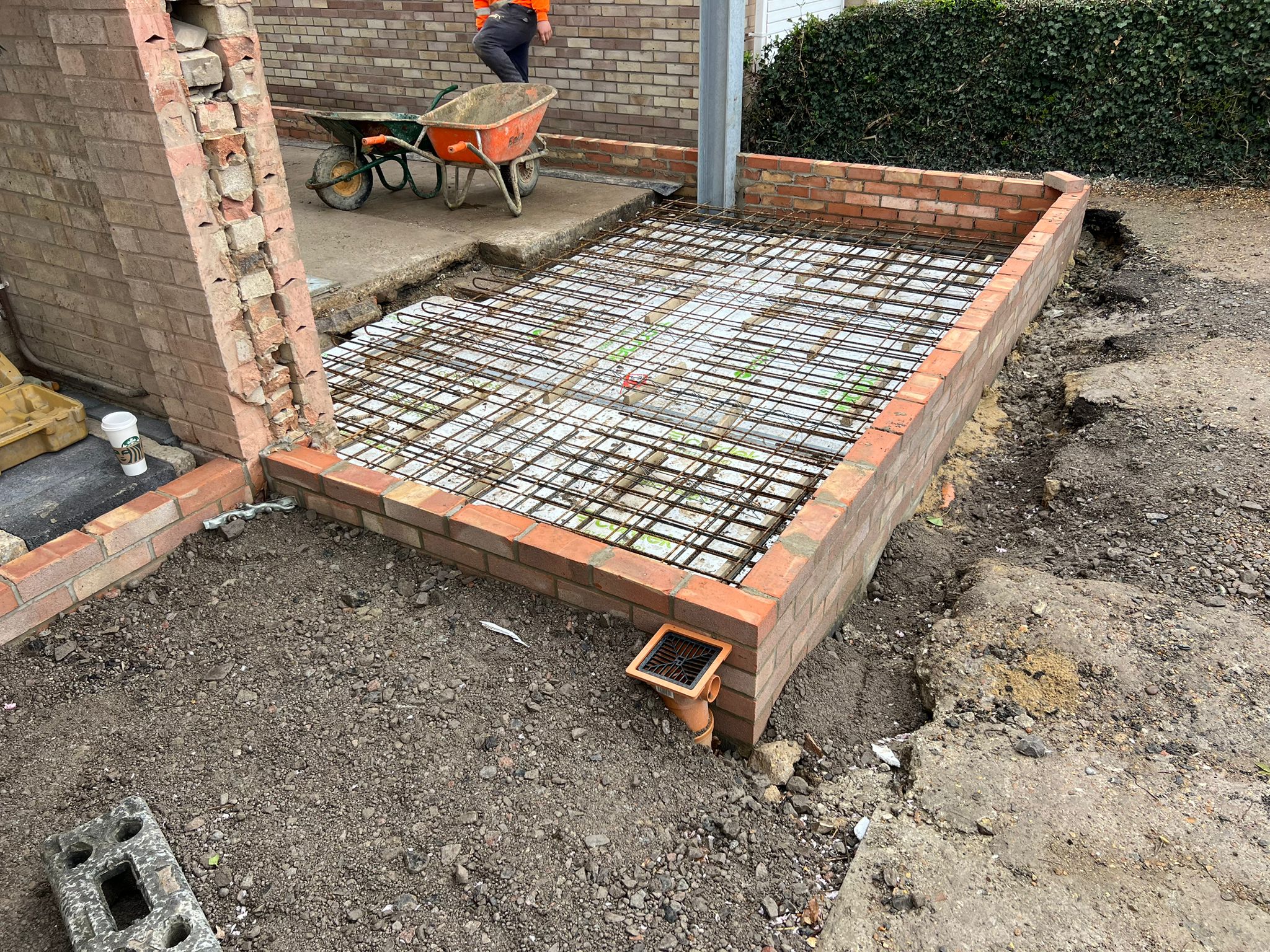- Admin
- February 26, 2024
Understanding Strip Foundations (Importance, Types, Pros & Cons)
What is a Strip Foundation?
Strip foundation is also referred to as strip footing and is one of the cost-effective foundation options. It is a shallow foundation usually utilised to construct low to medium-rise domestic buildings. It can be quickly installed in stable ground conditions with efficient load-bearing capacity. It is mainly used during the construction of domestic properties, such as extensions and new builds.
This article provides information about the significance, types, advantages, disadvantages, and installation methods for strip foundations. This guide also includes the importance of determining ground conditions before laying strip foundations, their recommended minimum depth, and how to ensure their proper maintenance.
Significance of Strip Foundations
Strip foundations are essential in civil engineering as they provide a stable and even structural base. They help evenly distribute weight over the entire soil structure and exert less pressure on the underneath soil. They prevent the deformation or settlement of the ground soil and ensure structural reliability, safety, and durability.

Where Are the Types of Strip Foundations?
Based on the ground conditions and access methods, there are two types of strip foundations:
Shallow Strip Foundations
Shallow strip foundations are suitable for supporting load bearing walls in grounds whose load-bearing capacity has already been evaluated and is designated suitable for carrying out the project. These foundations are also beneficial for providing the required support to closely grouped columns.
Wide Strip Foundations
The areas having lesser bearing capacity of the ground require wide strip foundations for spreading the load over a larger area. Such foundations also require concrete reinforcement to reduce the risk of uneven settlement.
Advantages of Strip Foundations
The strip foundations provide the following advantages in areas where they can be laid efficiently:
- They have a quick and simple installation process.
- They require simple formwork for installing the reinforcement.
- They distribute the loads uniformly over the soil and ensure structural stability.
- They are the cost-effective options as the required construction material is cheap.
- They can be easily constructed by professionals and manual labour who have complete understanding.

Disadvantages of Strip Foundations
Despite having some advantages, strip foundations also have some limitations, which include the following:
- They cannot be installed on grounds with irregular soil conditions.
- They are not suitable for installation on sloping construction sites.
- They can only be installed in limited construction sites with low loading requirements.
- They require suitable drainage measures and waterproofing to prevent the negative impacts of varying water levels.
- They can compromise the structural stability of buildings or lead to collapse in severe cases if installed in poor soil conditions.
What is the Installation Method for Strip Foundations?
The installation method used for laying efficient and robust strip foundations involves the following steps:
- Preparing the construction site by cleaning all the debris.
- Identifying and marking the appropriate locations and dimensions where load-bearing walls will be constructed.
- Excavating trenches by utilising the centre line of all the walls as a reference.
- Digging the deeper trenches and backfilling with compacted hardcore, if required.
- Constructing formwork for supporting the reinforced concrete.
- Placing steel reinforcement at the correct location with the help of mesh panels or rods, tied with suitable ties and stays.
- Pouring concrete in the dug trenches, levelling it with ensured consistency and coverage.
- Leaving the concrete to set for a specific duration before removing the formwork.
- Using excavated spoil for backfilling the space after removing the formwork.
Why Determine Ground Conditions Before Laying Strip Foundations?
Different soils, including clay, gravel, sand, and silt, have varying load-bearing capacities and weaknesses. Therefore, it is crucial to evaluate ground conditions carefully for the whole construction site to establish the load-bearing capacity of the entire area. It can be done by conducting a geographical survey of the whole site before the construction project starts.
The SPT (Standard Penetration Test) can be performed to identify the soil composition and type. The results obtained after performing this test should be incorporated into the design procedure for finding the most appropriate foundation type for a particular project.
These techniques help assess various crucial factors, such as weaker regions, access restrictions, water flows, and other on-site conditions that significantly impact the foundation types.

Strip Foundations Minimum Width
The guidelines to fulfil British Building Regulations are published in the approved document A, in which Section 2E entails the strip foundations’ minimum width as:
- The minimum depth of strip foundations should be 0.45m, except when these footings are laid in rocky areas.
- The minimum depth of strip foundations can be made deeper, reaching a level where ground conditions are stable in clay soils whose volume gets changed upon drying.
- The minimum depth of strip foundations should be at least 0.75m, 0.9m, and 1.0m for low, medium, and high shrinkage clay soils, respectively.
However, these minimum depths in respective ground conditions can be increased in situations where the load has to be transferred onto deeper layers where ground conditions are more suitable.
How to Ensure the Maintenance of Strip Foundations?
You can enhance the lifespan and stability of strip foundations with proper maintenance by regularly inspecting the foundations. You can inspect the strip foundations by monitoring the signs of movement or settlement to ensure there are no cracks or gaps in the ceilings, floors, and walls. Proper inspection also requires you to observe the water infiltration or pooling signs to prevent the problems of erosion and weakened soil bearing capacity, possibly leading to compromised stability of foundations.
To ensure proper maintenance, you should check the properties of the surrounding soil to identify any signs of erosion or extra moisture. Moreover, choosing regular professional inspections is also a wise decision to ensure efficient performance and stability of strip foundations for an extended time.
